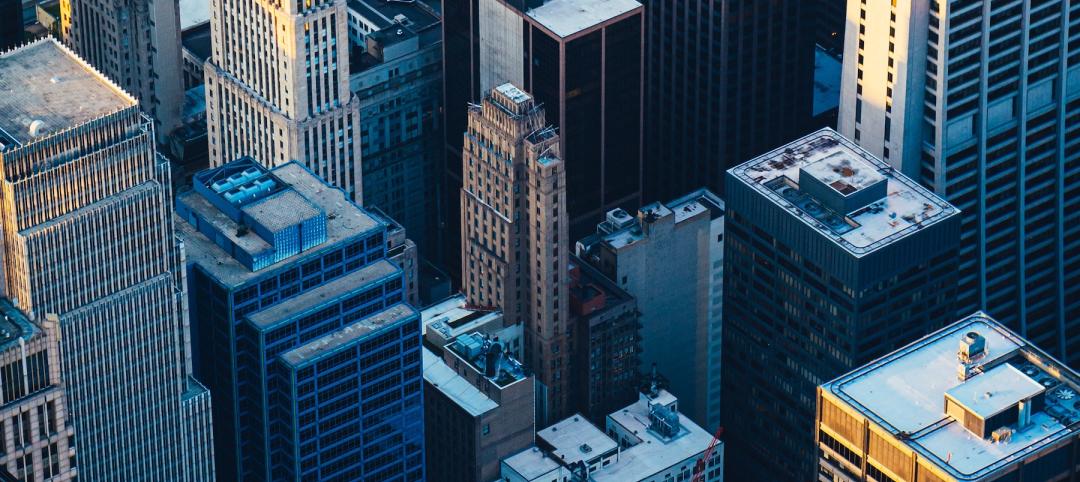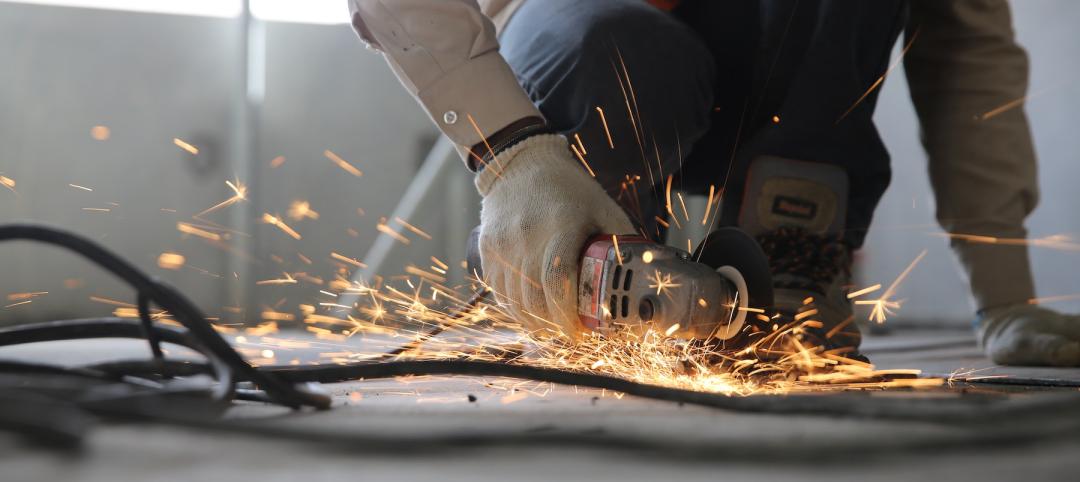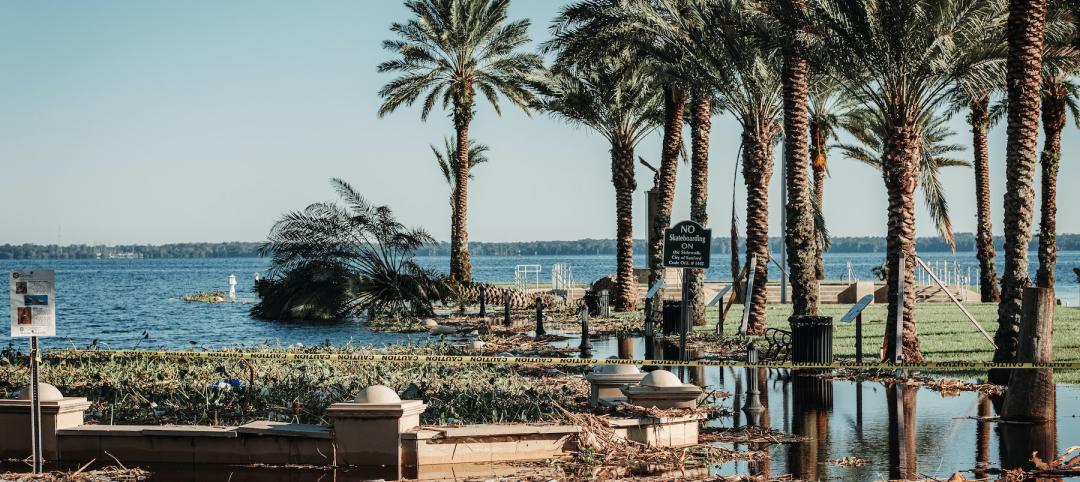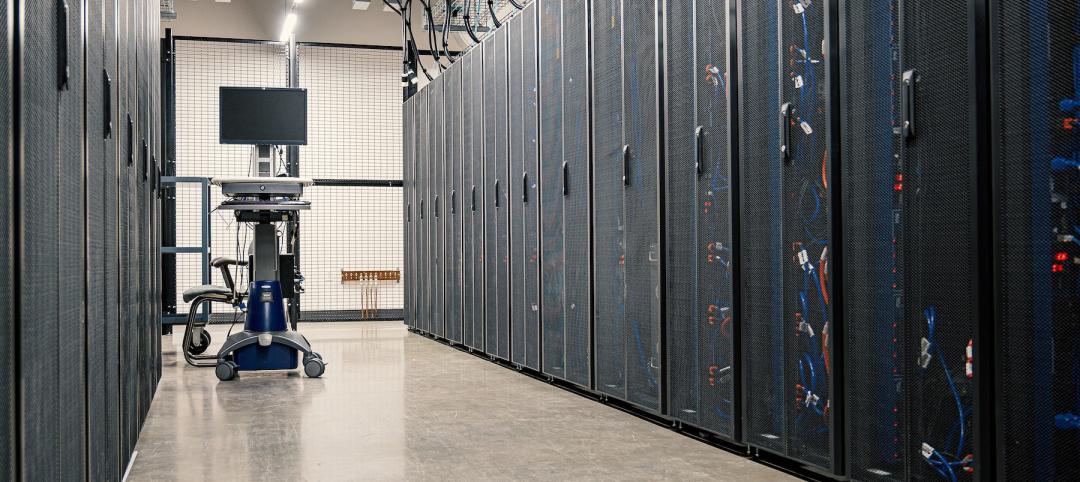 |
For years, precast concrete has been viewed as a mass-produced product with no personality or visual appeal—the vanilla of building materials.
Thanks to recent technological innovations in precast molds and thin veneers, however, that image is changing. As precast—concrete building components that are poured and molded offsite—continues to develop a vibrant personality all its own, it is playing an increasingly vital role in the building industry, as a nearly completed project at Pennsylvania State University illustrates.
“Precast is just coming into its own now,” says Bill Wolfford, vice president of Sponaugle Construction Services, State College, Pa., the construction manager for Crocker-West, a 121,000-sf, $16.5 million Applied Research Lab being built on a 6.3-acre site at Pennsylvania State University's main campus. Aside from a window curtain wall, the building is being constructed entirely of precast elements.
 |
| The $16.5 million Crocker-West Advanced Research Lab will seek LEED Gold certification when it’s completed in December. |
“The way manufacturers have been able to incorporate technology into molds to produce architecturally pleasing panels has gotten more people interested day by day,” says Wolfford. “Precast has come a long way in the last few years. It makes sense now.”
Scott Smith, the building's designer and a principal at local firm Civilsmith Engineering, Inc., says that one of the inherent advantages of a total precast building is its efficiency and the “tremendous time savings” it affords the construction schedule.
Using precast enabled Crocker-West to be constructed in phases, each consisting of a different piece of the total structure, along with a parallel construction schedule. This approach has enabled various trades to work concurrently on discrete sections of the structure. For example, while the roof and floors were in place in the first phase and workers were starting to frame walls, phase five was still just an open shell.
 |
| Designer Scott Smith of Civilsmith Engineering created a custom 30-foot module in which to cast most of the project’s 1,200 pieces, which are slightly smaller than in most precast construction. |
“The building just goes together like a jigsaw puzzle,” says Smith. “It allows trade workers to be in the building sooner, since the building goes up three stories at a time, one section at a time.”
The interior structure and exterior shell were erected in only eight-and-a-half weeks. Since everything is pre-coordinated, erecting the precast panels involved only one building trade, making the work flow a lot smoother.
Only four weeks into the job, the Building Team was able to roof completed portions and begin installing components such as windows and rough-in mechanical details. “This construction schedule is absolutely unattainable by other methods,” says Smith.
The use of welded connections instead of grouted ones allowed the structure to go up even faster than traditional total precast projects by eliminating the need to slow the work down to heat the grout. Elements such as light fixtures, conduit, and HVAC openings were also cast into the panels, saving subcontractors time.
On the main building, precast panels serve four functions: exterior façade, structural component, fireproofing, and insulation. The panels have an insulation value of R-28, compared with about R-13 for conventional construction.
Crocker-West is already well ahead of its originally projected 45-week construction schedule and is on track for completion in December, five weeks ahead of schedule. Without precast, a project of this size might require another six to eight months of construction time, according to Smith.
Heightened aesthetics
Strategic pre-planning in the precast design process has also resulted in enhanced aesthetics for the project.
Repetition—the key to efficiency and cost-effectiveness in precast—enabled Smith to incorporate ornate pieces in the project without blowing the budget. Many of the project's 1,200 pieces were cast on a single, 30-foot module of Smith's creation. He also designed a relatively expensive mold for an ornate cornice, then used the mold for 40 separate pieces that are spread across the entire building, greatly reducing the unit cost of each piece.
 |
| API, a division of US Concrete Precast Group, did all the precast work, including panels that emulate the look of limestone. Using precast will chop five weeks off the 45-week construction schedule. |
The Building Team also used new mold technology to employ dyed architectural precast on Crocker-West's exposed interior columns, which were sandblasted to provide texture. This technique eliminated the need to wrap the columns in fireproofing or to paint and maintain them. Other pieces utilized a kind of limestone-look liner or thin brick accents built into the initial design. API, a US Concrete Precast Group company, did all the precast work.
Careful scheduling and delivery of precast panels and hollow-core floor planks (from Nitterhouse Concrete Products, Chambersburg, Pa.) reduced the need for onsite storage, since the precast was off-loaded directly onto the building rather than having to be stored onsite.
While some precast project designs typically seek to minimize costs by limiting the number of precast pieces, Smith realized that trimming construction time would yield even greater savings. Instead of following a typical precast design that calls for erection of large vertical panels, Crocker-West was constructed horizontally, story by story, using slightly smaller pieces but more of them.
“Total precast offers a lot of benefits that might not be outwardly obvious,” says Smith, who with partner Mike Coyle formed C2S, a limited partnership which is developing the property for Penn State on a leaseback basis. Since Crocker-West is a prevailing wage project, less onsite work has reduced labor costs. A compressed construction schedule will result in a quicker revenue stream and lower construction interest costs for C2S.
Sustainable design benefits, too
Precast construction is also helping the Building Team toward its goal of a LEED Gold rating.
Severe flooding in the area prompted the township to impose rigorous site restrictions: absolutely no net gain in drainage runoff rate or volume from the 6.3-acre site for a 100-year flood event. To meet this requirement, Smith designed a gigantic underground precast cistern to capture runoff and control infiltration.
The 130-foot-long, 12x12-foot concrete tank can hold 138,000 gallons of runoff, which will be filtered, treated with ultraviolet light, and reused as graywater for flushing toilets in the building. The cistern sits entirely below ground and supports the weight of the parking area and landscaping. One of its walls is formed by the exterior load-bearing wall of the building.
Despite its many benefits, precast is not the answer for every project. “It's a very cost-competitive solution for large, multi-story buildings or big, single-story buildings,” says Sponaugle Construction's Wolfford.
To take full advantage of precast's benefits, the building needs to have lots of repetition in order to be able to reuse molds. Wolfford also recommends that a precast specialty engineer be consulted from the very start of the project to save on pre-design costs, which are critical to overall cost savings.
With the right project, though, precast can be a contactor's dream come true. “I'm a huge fan of total precast now,” says Wolfford, who had never done a precast job before Crocker-West. “It makes my life a lot easier.”
Related Stories
Resiliency | Nov 8, 2022
Oregon wildfire risk law prompts extensive backlash from property owners
A bipartisan bill aimed at protecting property owners from wildfires that was passed by the Oregon legislature has prompted a strong backlash.
Building Team | Nov 7, 2022
U.S. commercial buildings decreased energy use intensity from 2012 to 2018
The recently released 2018 Commercial Buildings Energy Consumption Survey (CBECS) by the U.S. Energy Information Administration found that the total floorspace in commercial buildings has increased but energy consumption has not, compared with the last survey analyzing the landscape in 2012.
| Nov 7, 2022
Mixed-use tower in China features world’s highest outdoor pool
Guangxi China Resources Tower, a new 403-meter-tall (1,322 feet) skyscraper in Nanning, China features the world’s highest outdoor pool—at 323 meters (1,060 feet) above grade.
Building Team | Nov 3, 2022
More than half of U.S. contractors say finding skilled workers is big barrier to their growth
More than half of U.S. contractors (55%) say finding enough skilled workers is one of the biggest barriers to growing their business, according to a DEWALT Powering the Future Survey.
Codes and Standards | Nov 2, 2022
New York City construction official wants to boost design-build
The new associate commissioner of alternative delivery in New York City’s Department of Design and Construction aims to encourage more design-build project delivery in the city.
University Buildings | Nov 2, 2022
New Univ. of Calif. Riverside business school building will support hybrid learning
A design-build partnership of Moore Ruble Yudell and McCarthy Building Companies will collaborate on a new business school building at the University of California at Riverside.
Building Team | Nov 1, 2022
Nonresidential construction spending increases slightly in September, says ABC
National nonresidential construction spending was up by 0.5% in September, according to an Associated Builders and Contractors analysis of data published today by the U.S. Census Bureau.
| Nov 1, 2022
Updated Florida building codes helped newer homes withstand Hurricane Ian
Newer homes seemed to fare much better than older structures during Hurricane Ian, suggesting that updated Florida building codes made a difference.
Wood | Nov 1, 2022
A European manufacturer says its engineered wood products can store carbon for decades
Metsä Wood, a Finland-based manufacturer of engineered wood products, says its sustainable, material-efficient products can store carbon for decades, helping to combat climate change.
Data Centers | Oct 31, 2022
Data center construction facing record-breaking inflation, delays
Data center construction projects face record-breaking inflation amid delays to materials deliveries and competition for skilled labor, according to research from global professional services company Turner & Townsend.
















